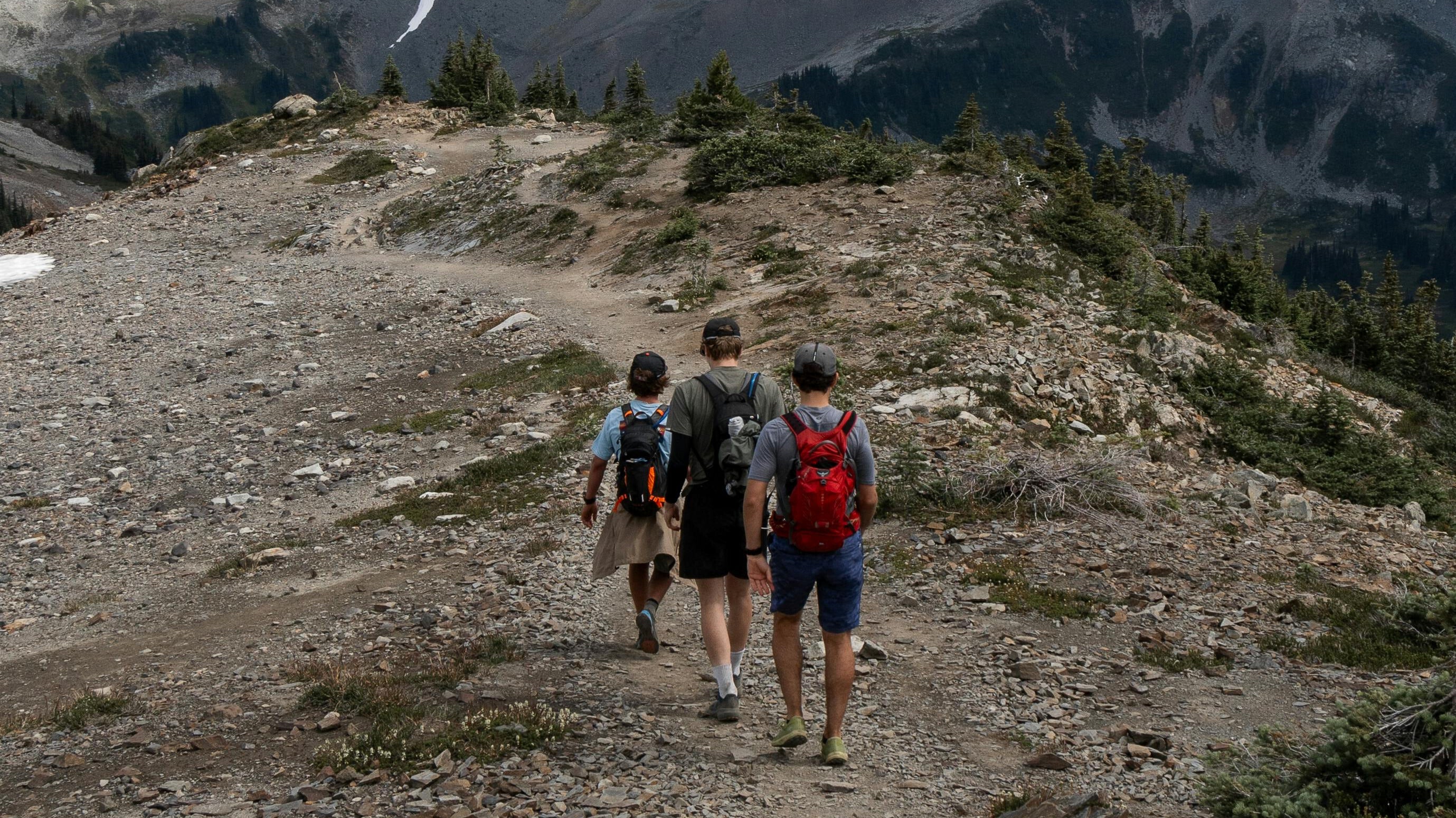Mountain shoes are an essential that cannot be missing from your wardrobe. However, wearing them in unfavorable or optimal conditions can mean a before and after in our mountain routes. In this blog, we are going to give you a few tips and signs so that you know when it is time to change your hiking shoes.
We know that many times it can be difficult for us to get rid of those shoes that have accompanied us on so many adventures and have become our favorites, but believe us, a change is never bad, and we assure you that in the end, you will be grateful for it.
How many kilometers does your shoe have?
One of the ways to know if you have to change your hiking shoes or no, is by knowing the kilometers you have done with them. Although your mountain footwear seems to be relatively good, studies indicate that the ideal is to change your mountain shoes between 900km and 1000km. Since the upper part of the sole begins to lose properties and, therefore, lose cushioning.
Keeping track of the kilometers traveled can be a difficult task, but it should not be exact either. So look at the kilometers you usually travel on your mountain routes, the approximate days you are going to hike, and you will have the kilometers your shoes have.
Factors that cause greater wear and tear on our mountain shoes
Although prolonged use of footwear greatly influences its wear, there are other factors that can impact our sandals or hiking shoes to deteriorate prematurely. These might be:
- An incorrect step can lead to poor wear of the shoe. If it's pronation, we would be talking about excess wear on the internal part of the sole. However, in the case of supination, the external part would be worn much more.
- Using a shoe that is not specialized for the terrain on which we are going to walk can cause greater wear and tear. At RRAT's, we offer you two options. The first is the Y-Gravel mountain sandal, perfect for walks on easy and non-technical terrain, where you can mix dirt and asphalt. The second option would be the RRAT's Y-Mountain, ideal for those more complicated mountain routes that require better technique.
- Wearing your sneakers without letting them “rest” means better deterioration of the materials. Therefore, it is not recommended to use it every day and allow a period of 48 hours to use it again so that its compounds “recover” their properties.
- A step that we often forget is to undo the laces or ribbons of our shoes or mountain sandals when putting them on. Skipping this step and putting on the shoes abruptly can cause the laces to become damaged. Furthermore, if we unbutton them before, we lengthen the durability of the upper part of the shoe.
The condition of the sole, a fundamental factor
When choosing our new adventure companions based on the properties of the sole, it's equally important to pay attention to when it starts to wear out. As the sole wears down, it loses most of its properties.
To assess the condition of the sole and determine if it's time to renew your mountain shoes, simply inspect the tread patterns. If the patterns are no longer visible or appear nearly smooth, it indicates significant wear, meaning that the sole's properties will be minimal or non-existent.
If you enjoy hiking but do so infrequently, and you notice that the tread pattern on your shoes is still almost intact, it's crucial to check whether the material has aged, hardened, or dried out. If it has, it becomes important to replace your footwear. Even if it may not be immediately apparent on hard, smooth, or wet surfaces, the risk of slipping and injuring yourself increases.
The midsole also deteriorates
While we have talked about the sole, now it is the turn of the midsole. To know if the midsole of our mountain footwear is worn, we have to look at its wrinkles and how deep they are. We must keep in mind that the softer it is, the more it will wrinkle, but this also depends on the hours of use we give it.
When we observe abundant wrinkles, especially if some of them are deep, it signals that it's time to bid farewell to our mountain shoes and welcome a new pair.
Back pain and physical discomfort due to poor footwear
Many times, the physical pain we experience while hiking is due to the poor condition of the shoes.
Old shoes with soles in poor condition can cause our footprint to change without us realizing it, causing an incorrect footprint that leads to back and foot pain.
But how can we know if the discomfort is due to the shoe? It is very easy. We can do several tests, such as seeing if on a daily basis with other shoes (work or casual) we also feel that pain, or we can compare the old shoes with others that are mountain shoes during the same period of time and see if in both cases you have had discomfort or if they have only appeared when you have used the old shoes.
If you have come to the conclusion that your back and/or foot pain is due to the poor condition of your shoes, it is time to change them!
What options do I have for my old hiking shoes?
If we are talking about old, very used and practically “destroyed” shoes, the best option will be to throw them away. But if your shoes are relatively good and you think they could get a little more wear, you can wash them and donate them so they can have a second life. This way, you also help the environment!


